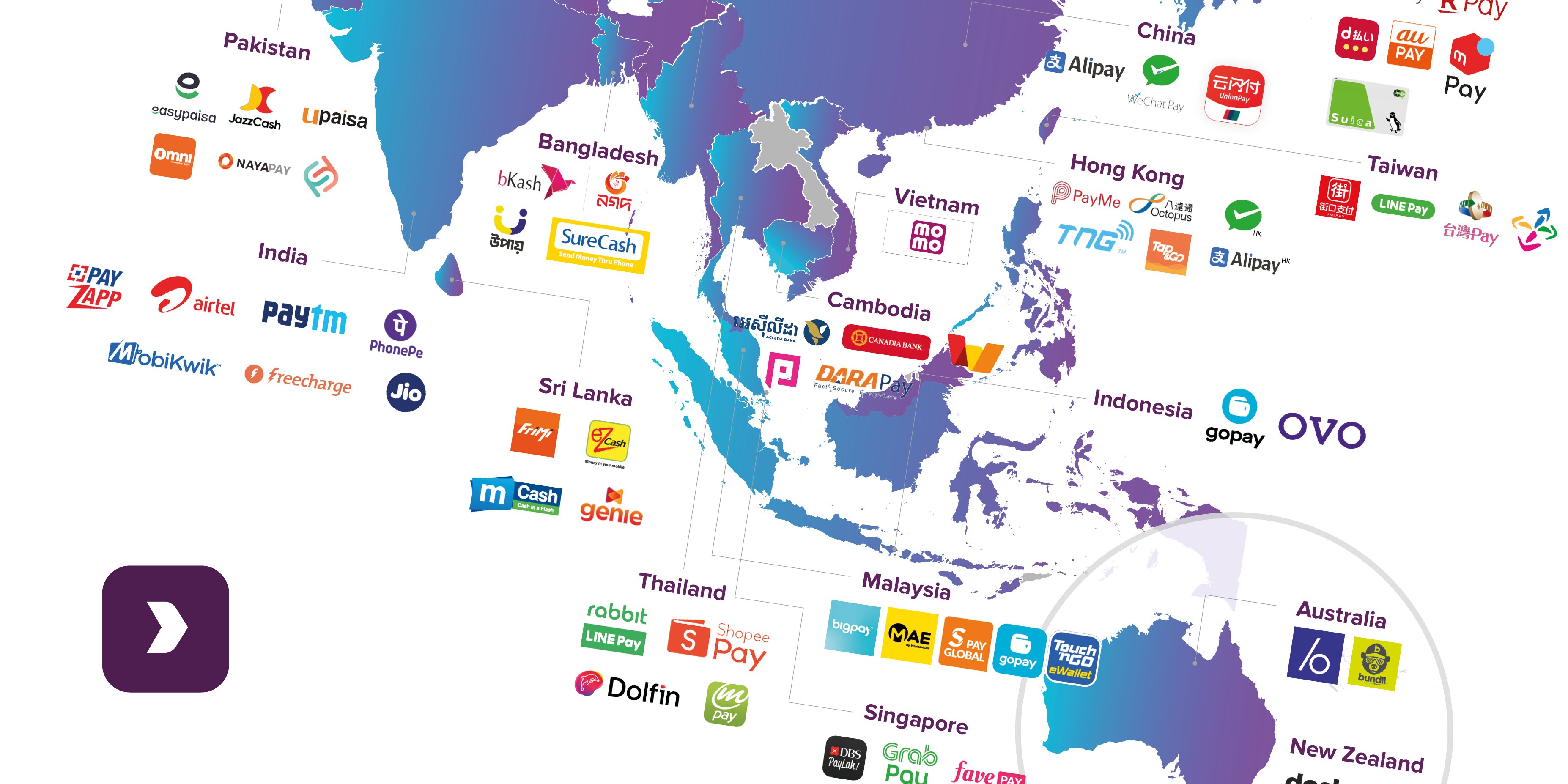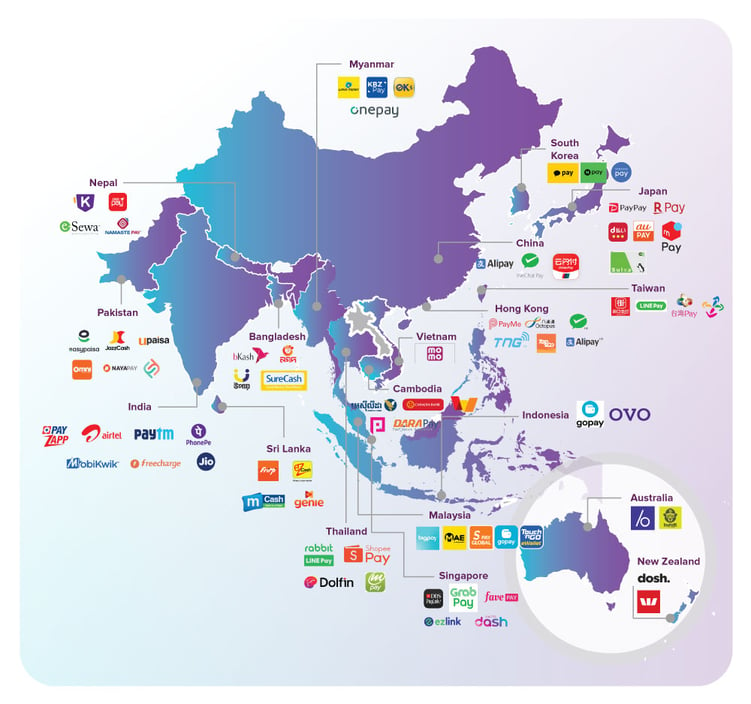Beyond Just Payments: The Diversity of APAC’s E-Wallet Market

Experience seamless, efficient and customizable ATM management
End-to-end, secure, and integrative payment solutions
A white-label, user-friendly platform for secure, versatile payment solutions
Engaging employees to learn, improve and master BPC solutions
Robust fraud detection, risk-based authentication, and multi-institutional security
Streamlining payments and enhancing merchant experiences with seamless solutions
Streamlining and securing multi-network transactions while enhancing efficiency
Deliver hyper-personalized experiences with BPC AI
Operate seamlessly with large data sets, source documents, and generate insightful reports with BPC AI Virtual Assistant.
From enabling banks to enabling banking
The building blocks for next gen banking delivered today
Global banking fit for local needs
Stack to Service - white label payment excellence
More and Better Together
Mass transit the personal way
Enhancing the real life of citizens
Mass transit the personal way
Connecting payment rails to the last mile
Creating relevant industry-led ecosystems
Integrate our APIs on your apps.
The latest developer docs, including tutorials, sample code, and API reference.
Experience seamless, efficient and customizable ATM management
End-to-end, secure, and integrative payment solutions
A white-label, user-friendly platform for secure, versatile payment solutions
Engaging employees to learn, improve and master BPC solutions
Robust fraud detection, risk-based authentication, and multi-institutional security
Streamlining payments and enhancing merchant experiences with seamless solutions
Streamlining and securing multi-network transactions while enhancing efficiency
Deliver hyper-personalized experiences with BPC AI
Operate seamlessly with large data sets, source documents, and generate insightful reports with BPC AI Virtual Assistant.
From enabling banks to enabling banking
The building blocks for next gen banking delivered today
Global banking fit for local needs
Stack to Service - white label payment excellence
More and Better Together
Mass transit the personal way
Enhancing the real life of citizens
Mass transit the personal way
Connecting payment rails to the last mile
Creating relevant industry-led ecosystems
Integrate our APIs on your apps.
The latest developer docs, including tutorials, sample code, and API reference.

In Asia Pacific, digital wallets are no longer viewed as experimental add-ons to cash or cards. They have become everyday tools used to pay, transfer, and save, with adoption reaching extraordinary levels. According to Biometric Update, by the end of 2024 more than 4.8 billion people worldwide were using digital wallets, and more than 60 percent of them were based in Asia Pacific. This dominance reflects how mobile-first lifestyles and fintech innovation have made wallets a central feature of financial and social life across the region.
The economic weight behind this shift is striking. Deloitte’s 2024 research found that Asia Pacific accounts for more than two-thirds of global digital wallet spending, representing approximately USD 9.8 trillion in annual transaction value. Far from being limited to younger consumers or urban elites, wallets have become embedded across every demographic and economic segment, from farmers receiving remittances on mobile phones to urban commuters paying for transport and their everyday coffee.
Everyday use, everyday convenience
What began as a way to pay for online shopping has expanded into almost every corner of daily routines. In India, wallets are central to UPI-driven transactions that covers everything from paying street vendors to settling household bills. In Indonesia, QR-based wallets are used widely at food markets and for ride-hailing, making them essential for both consumers and small businesses. In the Philippines, wallets have become the primary channel for remittances, allowing families to receive money instantly and spend it directly on goods and services. In China, wallets such as Alipay and WeChat Pay are integrated into nearly every aspect of urban life, from booking taxis and paying school fees to managing healthcare appointments.
Emerging markets are particularly dynamic. Euromonitor notes that between 2019 and 2024, electronic payments in developing Asia Pacific economies grew at a compound annual rate of 43 percent, with India seeing 67 percent growth, Indonesia 48 percent, and the Philippines 44 percent. These figures highlight how quickly mobile internet and affordable devices have turned into gateways for financial access, especially for communities that were historically outside the reach of traditional banking.
More than payments
Wallets in Asia Pacific also succeed because they offer more than a fast way to pay. Nearly half of consumers identify improved security as their top reason for using digital wallets, followed by 36 percent who value convenience and 33 percent who appreciate rewards and loyalty benefits as recent surveys claim. These preferences show that wallets are trusted not only for speed but also for their ability to deliver safety and added value.
This is especially meaningful in countries with low levels of banking access. In rural Indonesia or the Philippines, opening a bank account often requires travel, paperwork, and fees that are beyond reach for many. A mobile wallet, however, allows users to store money, make purchases, and pay bills instantly. Over time, wallets often evolve into gateways for broader financial services, offering microloans, insurance, or investment products. In this way, wallets are acting as vehicles of financial inclusion.
A diverse landscape
The diversity of the Asia Pacific wallet market is one of its strengths. In China, wallets are ubiquitous. It is reported that 82 percent of e-commerce transactions and 66 percent of in-store purchases are completed through Alipay or WeChat Pay. These platforms have become digital ecosystems that integrate shopping, transport, communication, and even public services, shaping entire consumer lifestyles.
Elsewhere, local champions play equally influential roles. In the Philippines, GCash has grown to more than 81 million users, almost three-quarters of the national population, offering services that range from payments to subscriptions and remittances. In Singapore, the government-backed SGQR framework consolidates multiple providers into a single QR code, simplifying acceptance for merchants while guaranteeing interoperability for consumers.
Closed and open systems
Wallet models in Asia Pacific can be broadly divided into closed-loop and open-loop systems. Closed-loop wallets are tied to a specific ecosystem, whether a retailer, transport operator, or super-app. They drive repeat use by offering rewards and loyalty benefits, creating stickiness within their networks.
Some of the closed-loop wallet examples include:
Open-loop wallets, by contrast, are connected to international card schemes such as Visa and Mastercard, offering broader utility across borders.
Among Asia Pacific’s open-loop wallets:
Governments are increasingly promoting interoperability between these models. ASEAN members, for instance, are linking national QR systems to allow cross-border wallet payments. According to the ASEAN Secretariat, these QR linkages make it possible for a Thai tourist to pay in Indonesia using their domestic wallet without needing to change currency or open a new account. This integration adds significant value to both consumers and merchants, encouraging regional travel and trade.

Why wallets matter for the region
The benefits of wallets in Asia Pacific extend far beyond the transaction. For individuals, wallets bring speed, safety, and access to financial tools that many could not reach before. For merchants, wallets unlock higher sales and allow for richer customer insights, enabling them to personalise promotions and strengthen loyalty programmes. For banks and fintechs, wallets open the door to new business models, faster service delivery, and the ability to adapt to the diverse needs of a fragmented market.
The impact on financial inclusion is particularly notable. By reducing reliance on cash, wallets cut transaction costs and bring more activity into the formal system. Small businesses, in particular, benefit from easier payment acceptance and improved cash flow. Governments also see advantages, from improved transparency in taxation to the ability to deliver subsidies and benefits more directly.
Why APAC leads the way
The reasons why Asia Pacific dominates the global wallet market are clear. Wallets have been integrated into every layer of daily life, not just commerce but also transport, healthcare, and social services. They have extended access to financial services to millions who were previously excluded, providing simple, secure, and affordable alternatives to banks. And they continue to evolve through constant innovation, from super-app ecosystems to cross-border QR payment linkages that make payments seamless across countries.
To further explore on Open and Closed- loop wallet’s, check out BPC’s “Your Essential Guide on How to Build Closed and Open Loop Wallet Ecosystems”, which provides financial institutions with strategies and frameworks for building wallet platforms at scale. To explore the full guide, visit BPC.